Delicious pasta is possible on a gluten-free diet! Learn about the best gluten-free pasta options available now, and why we recommend them.
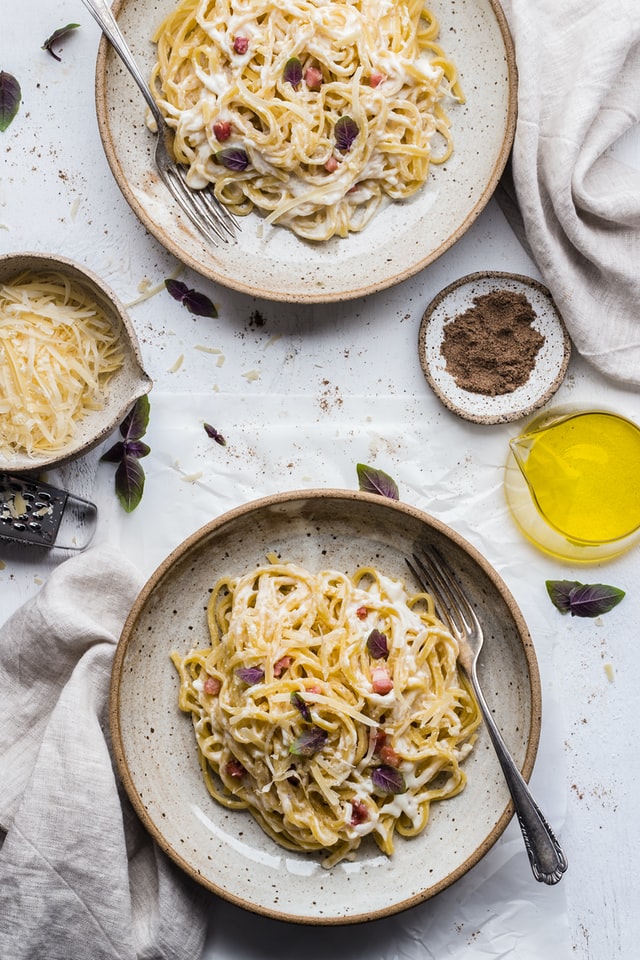
Why Eat Gluten-Free Pasta?
If you've been diagnosed with celiac disease or have a gluten intolerance, you may have had a moment where you panicked and thought, "Will I ever get to eat pasta again?"
The good news is that in today's grocery stores there are multiple gluten-free pastas for you to choose from. New gluten-free pasta brands pop up all the time.
There's no need to avoid pasta just because you're eating gluten-free.
Want to try making your own gluten-free pasta from scratch? Try out our easy step-by-step recipes for Easy Homemade Gluten-Free Pasta (No Pasta Machine Needed!) and Gluten-Free Egg Noodles.
What To Look For When Buying Gluten-Free Pasta
- Be sure to read the ingredients. We've looked at the ingredients for the brands listed here, but it's always a good idea to double-check as you're shopping to be sure that the pasta you're buying is in fact safe for you to eat.
- Consider pasta imported from Italy. All of the best pasta is made in Italy, so it makes sense that they would also import the best gluten-free pasta too.
- Consider why you want gluten-free pasta. Gluten-free pastas come in several different varieties with different ingredients, nutrition profiles, and benefits. Decide if you're most interested in taste, nutrition, or a low carb count, and use that to start your decision-making.
The best gluten-free noodles are made from ingredients that do not contain gluten and have a texture that is very close to traditional wheat-based pasta. This means that you can add pasta to your favorite gluten free meals seamlessly.
As a bonus, most gluten-free pastas are plant-based, and some are made with beans and legumes, which add needed fiber and nutrients to our diets.
You can try all of the gluten-free pasta varieties yourself and choose your favorites, but save yourself some time and check out our recommendations first.
Our picks for the best gluten-free pasta are based on personal experience and research of gluten-free pasta reviews from around the web.
All of these recommended gluten-free pasta brands are available in stores or online.
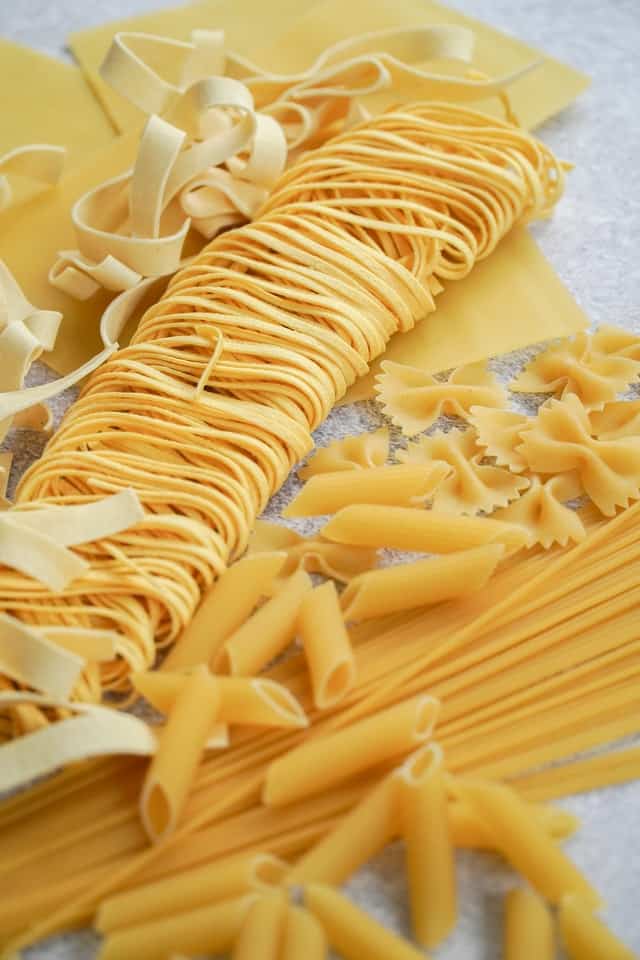
Best Types of Gluten-Free Pasta
There are primarily two main types of gluten-free pasta that we'll review here.
- Gluten-Free Pasta made from grains like rice and corn - these most closely resemble wheat-based pasta, and for the most part, taste the same. If you're looking for the best non-wheat pasta that tastes like it has wheat in it, start here.
- Gluten-Free Pasta made from beans or vegetables - these are marketed as being healthier than grain-based pastas and have higher amounts of protein and fiber. The texture and flavor of this type of gluten-free pasta varies among brands and ingredients.
Our top picks for gluten-free pasta include products from both categories.
If you're looking for a gluten-free pasta that is very similar to traditional pasta, stick with rice or corn pasta. These types of pasta make perfect Gluten Free Macaroni and Cheese.
If you're ready to be more adventurous, try some of our favorite bean-based products in Gluten Free Chicken Noodle Soup, or to make a tasty Gluten Free Lasagna.
Best Brown Rice Pasta

Most of the gluten-free pasta recipes you see on this site are made using Jovial Brown Rice Pastas.
- Taste: This is the best-tasting gluten-free pasta. Reviewers say that this is the best gluten-free pasta they've ever tasted. It's been named "Best Gluten-Free Pasta" by America's Test Kitchen.
- Pros: 100% organic, non-GMO Project Verified. Made in Italy (where all the best pasta comes from!). Top 8 allergen-free, except the gluten-free Tagliatelle, which is made with eggs.
- Cons: Can turn mushy if overcooked.
Recommendations for Gluten-Free Pastas
- Gluten free spaghetti
- Jovial Gluten Free Fusilli
- Jovial Gluten Free Penne
- Jovial Gluten Free Lasagna Noodles
Pro Tip: Order gluten-free pasta in bulk on Amazon for the best prices.
Best Gluten-Free Pasta Made With Corn
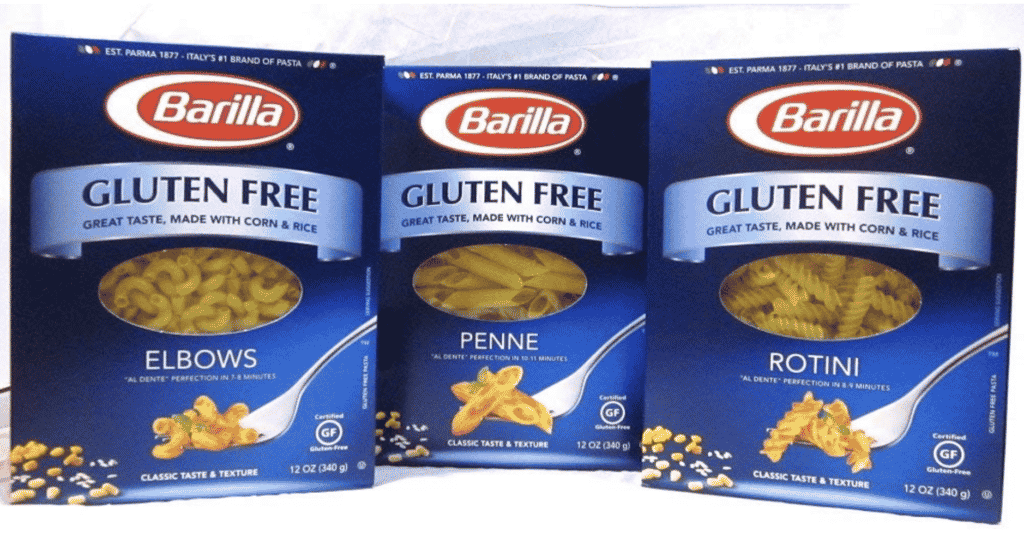
Corn is another gluten-free grain that can be used to make delicious pasta. We have one clear favorite in this category and some honorable mentions
Barilla Gluten Free Pasta is a tasty, affordable, and reliable favorite. The main ingredients are corn and rice.
- Taste: Barilla's GF pasta has a taste and texture that very closely mimics that of traditional pasta. Most can't even tell the difference!
- Pros: Barilla is a pasta name that is trusted all over for quality. Their gluten-free products are non-GMO, certified gluten-free, and easy to find in grocery stores.
- Cons: This brand comes in 6 different shapes, but we are missing some of the unique shapes that can be found in Barilla's regular pasta line
Available Options
- Barilla Gluten Free Spaghetti
- Barilla Gluten Free Variety Pack (elbows, penne, rotini)
- Barilla Gluten Free Elbow Noodles
Other Grain-based Gluten Free Pasta to Try
- Trader Joe's Gluten Free Pasta - A tasty and affordable option if you can buy it in-store.
- Delallo Gluten Free Orzo
- Ancient Harvest Gluten Free Pasta, Corn, Brown Rice, and Quinoa
- 365 by Whole Foods Gluten Free Pasta
Best Grain-Free Gluten-Free Pasta
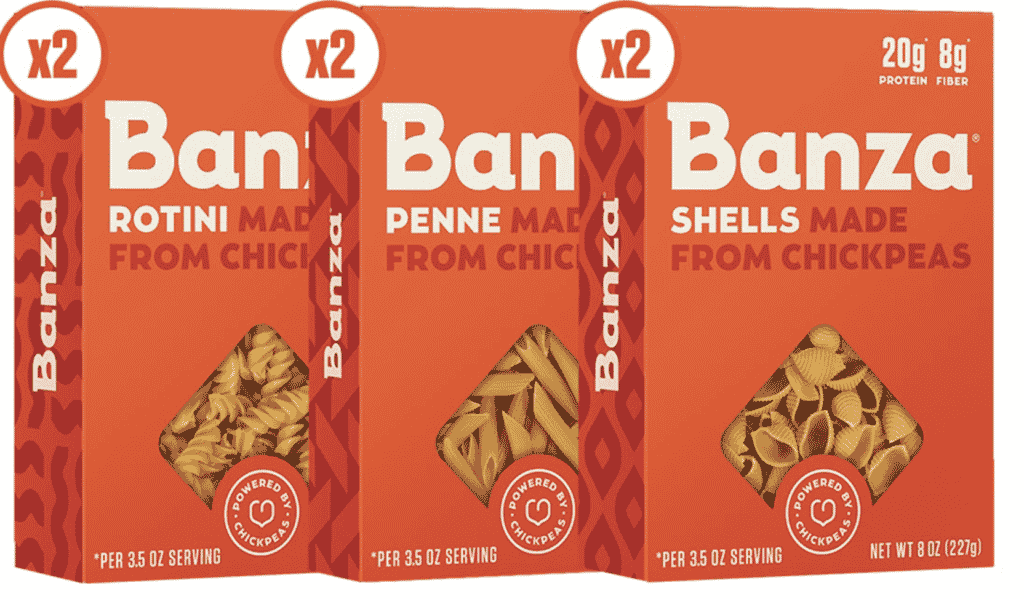
If you're looking for gluten-free pasta options that are also grain (corn, rice, amaranth, etc.) free, this is the recommendation that you need! Our top picks are made from beans or legumes.
Banza Chickpea Pasta was one of the first of its kind on the market a few years ago, and is still a winner!
- Taste: The taste of chickpea pasta might take some getting used to, particularly if you're looking for a flavor match for wheat pasta. Banza is thicker and chewier than some others, and while it doesn't taste like beans, it has a slightly nutty flavor that may not be to your liking.
- Pros: The Banza gluten-free pasta line has expanded to include many different shapes that aren't otherwise available, like Cascatelli and Cavatapi. They also make boxed chickpea pasta mac and cheese. You may also like that Banza is made in the USA, and is high in protein.
- Cons: Chickpea pasta does need to be rinsed, and the cooking process is a bit different. Expect the pasta water to foam up quite a bit! Banza is not certified Organic, although it is top-8 free and non-GMO certified.
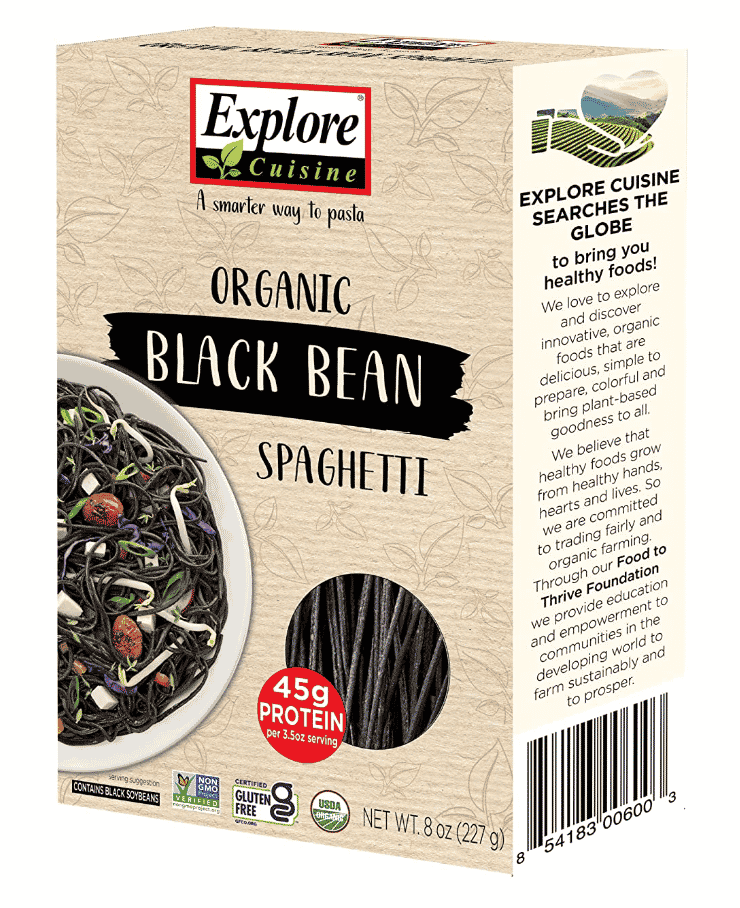
Explore Cuisine Pastas are made from Organic beans. Some also include corn. So while the varieties aren't all grain-free, they do include fewer grains than the corn and rice varieties above.
- Taste: This bean pasta tastes more like regular pasta since it's made with a blend of bean flour, pea flour, and rice flour.
- Pros: The variety available from this brand makes dinner exciting. The different beans used to make Explore Cuisine Pasta make the noodles themselves different colors too. Green Lentil pasta is a bright green, while Edamami spaghetti is a deeper green color. The most fun is the dark Black Bean pasta!
- Cons: While this pasta comes in a few different flavors, the shapes are limited to just spaghetti, penne, fusilli, and fettuccini. It's also more expensive than some other brands.
- Grain Free Explore Cuisine Pastas include: Organic Edamame Spaghetti, Organic Black Bean and Sesame Fettuccine, Organic Edamame & Mung Bean Fettucini, Oragnic Black Bean Spaghetti, and Organic Edamame Spaghetti.
- The Fava Bean, Chickpea, and Lentil varieties include brown rice flour.
These colorful gluten-free pasta shapes are perfect for making our Gluten Free Pasta Salad!
More Grain-Free Gluten-Free Pastas We Recommend
- Jovial Grain Free Cassava Pasta
- Plant-Based Shirataki Miracle Noodles
- Ancient Harvest Gluten Free Veggie Penne
- Barilla Red Lentil Rotini
Is Gluten Free Pasta Healthier than Regular Pasta?
In general, gluten free pasta has similar calories to that of wheat-based pasta. Some gluten-free pastas will have higher amounts of nutrients though, like protein, fiber, or vitamins, due to their ingredients.
How Do You Cook Gluten Free Pasta?
Cooking most gluten free pasta is exactly the same as cooking regular pasta. Cook the pasta according to the directions on the package, in salted boiling water on the stove.
Should You Rinse Gluten Free Pasta?
Just like traditional pasta, you shouldn't rinse gluten free pasta after you cook it. Instead, you should add it to your pasta sauce while it's still hot.
The exceptions to this rule are pasta that you're cooking to make cold gluten free pasta salad and any brand of pasta that specifically tells you to rinse it. In this case, you do want to rinse it with cold water.
Does Gluten Free Pasta Have Carbs?
While some gluten free pastas are low carb, most are not. The replacements used for wheat flour are typically other grains or beans.
That might feel like a lot of information to process! I hope that our recommendations of the best gluten-free pasta are helpful to you on your journey through gluten-free living.
Want to skip the research and just know what our number one top recommendation for gluten-free pasta is?
Jovial Pasta is the one we use most often for our gluten-free pasta recipes. It comes in a variety of shapes like gluten-free rotini and gluten free spaghetti, and it's available at most grocery stores.
The convenience and delicious flavor of Jovial makes it our top pick for the best gluten-free pasta available right now.
Looking for easy gluten-free meals and snacks? Check out our list of the Best Gluten-Free Subscription Boxes.
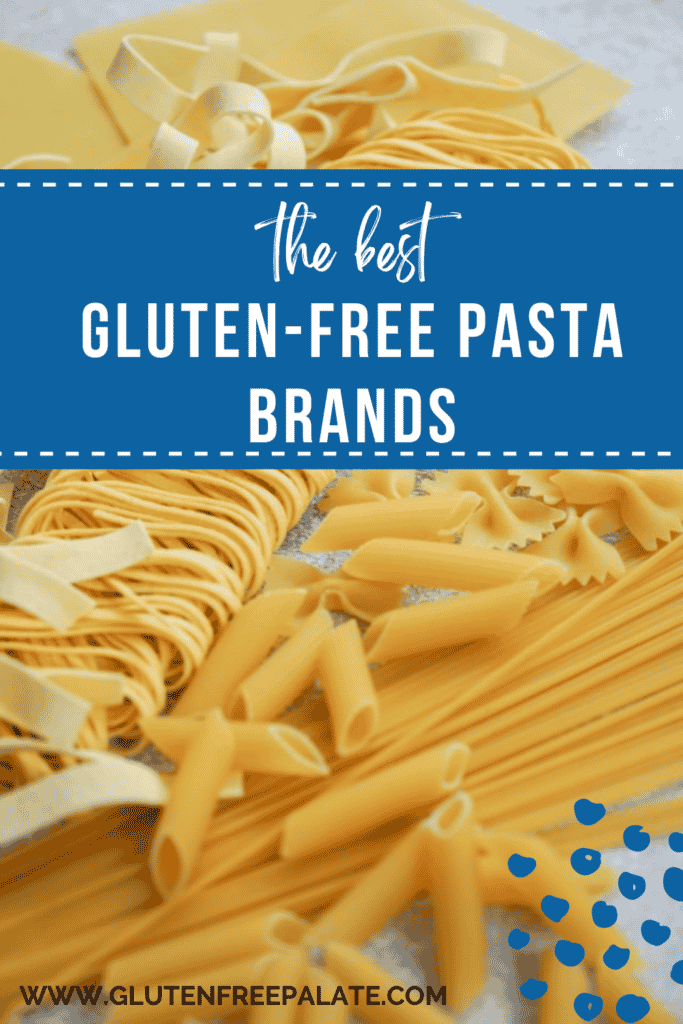


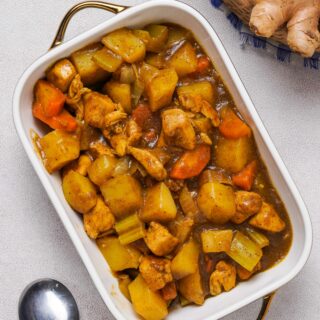
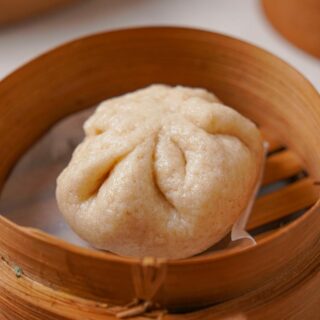
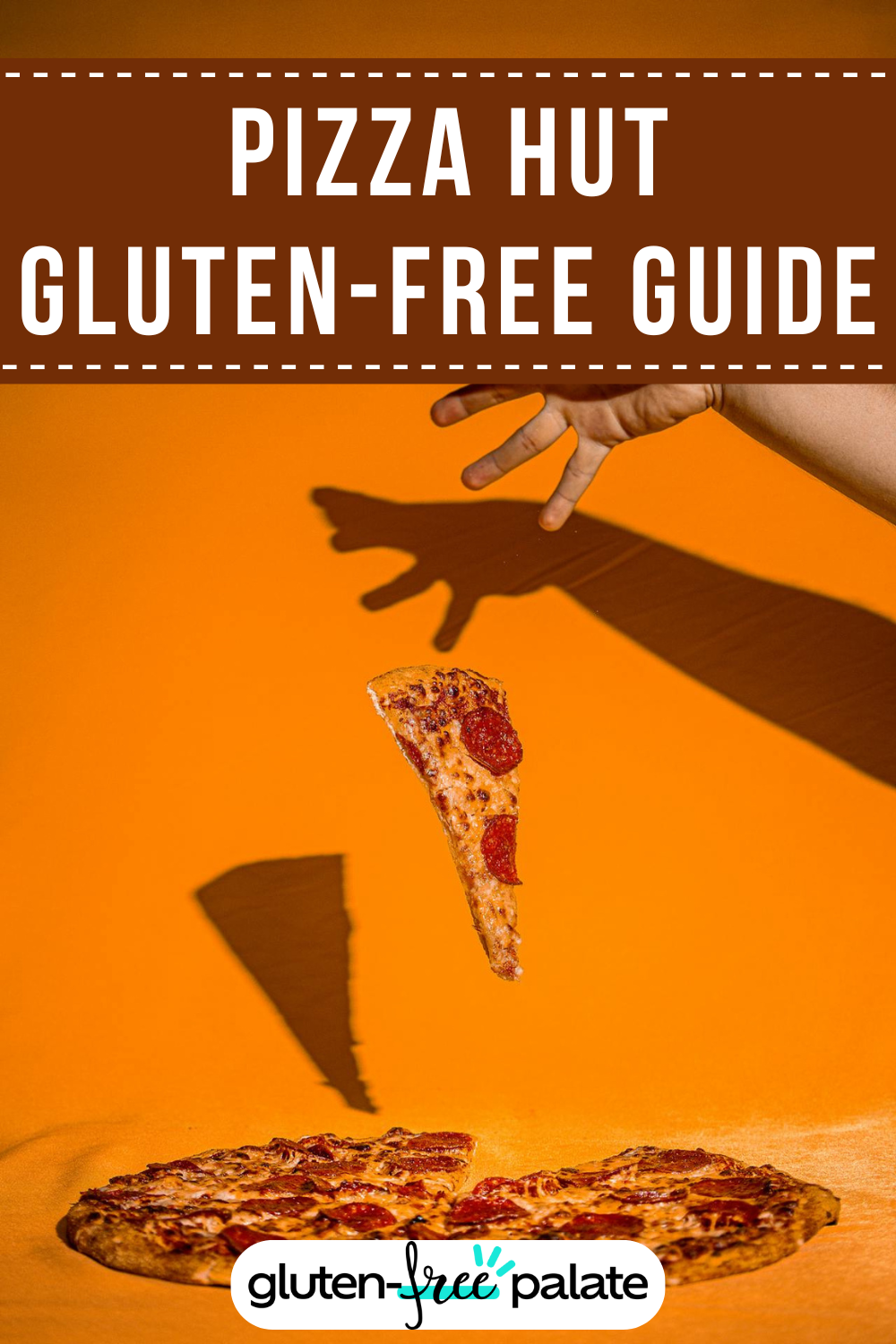
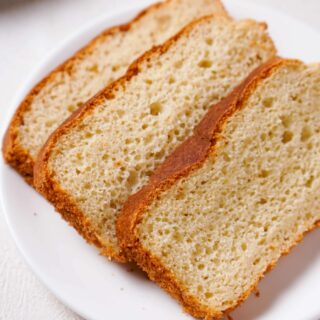
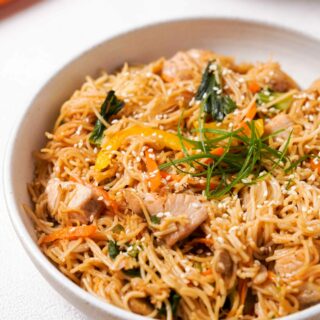
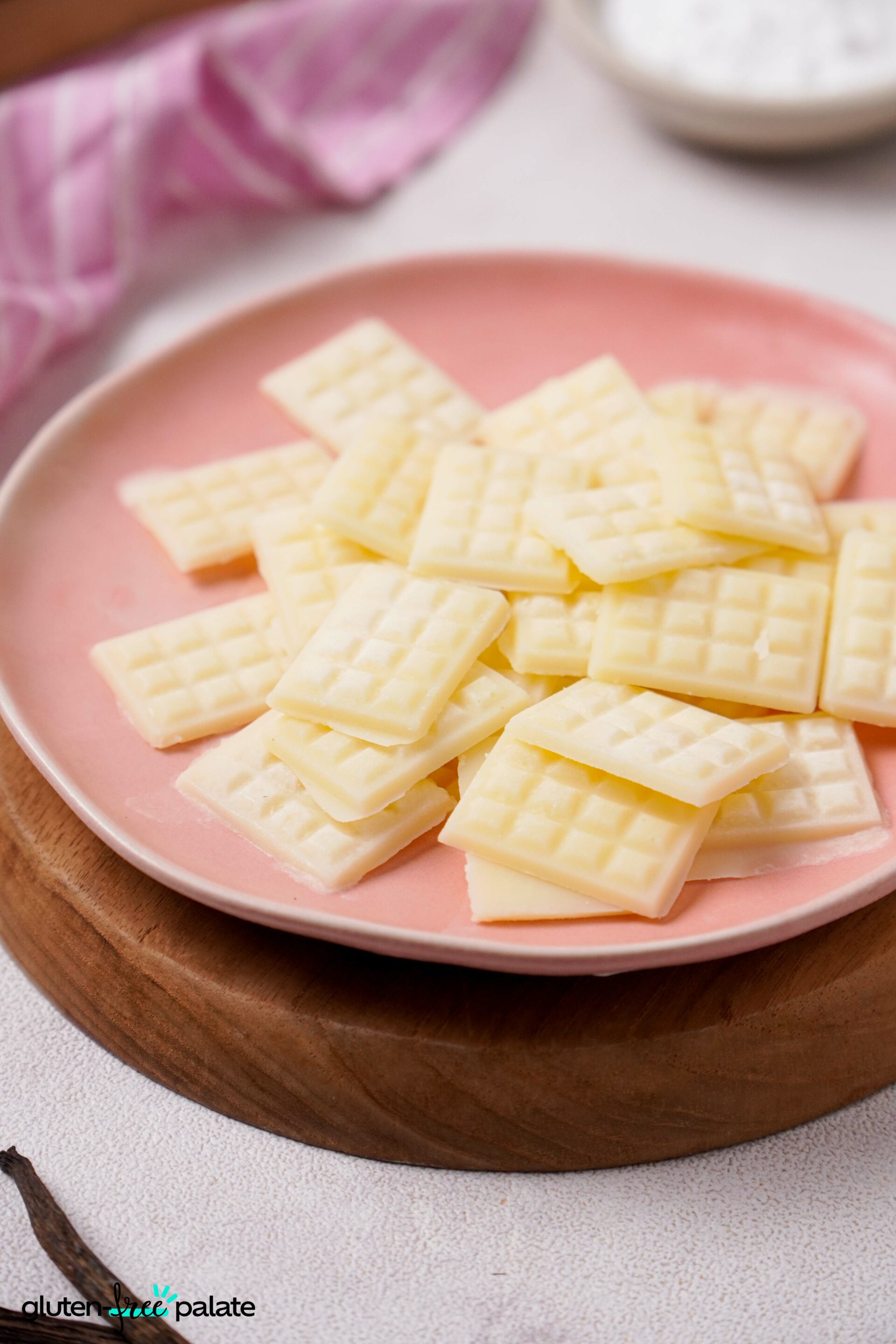
Leave a Question or Comment